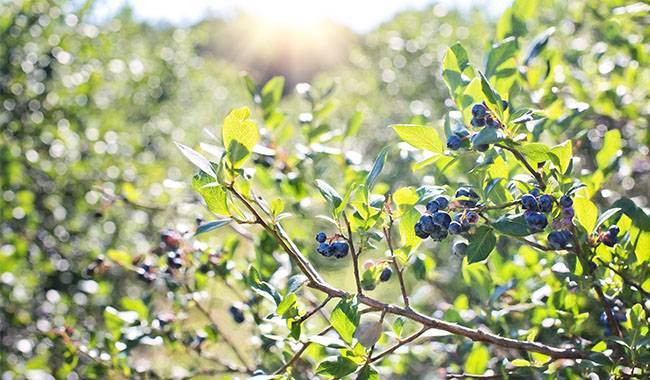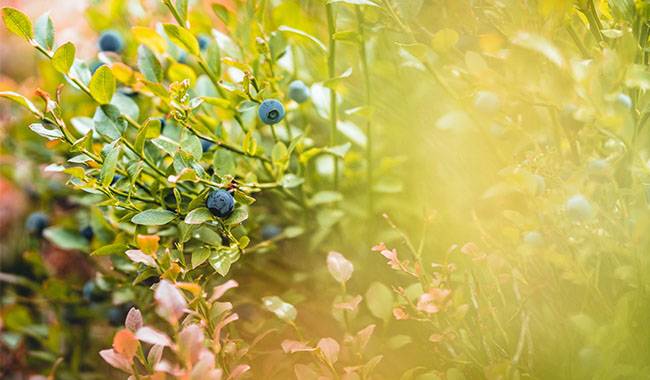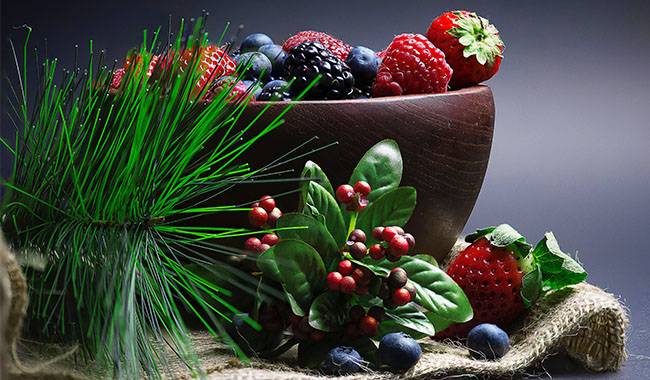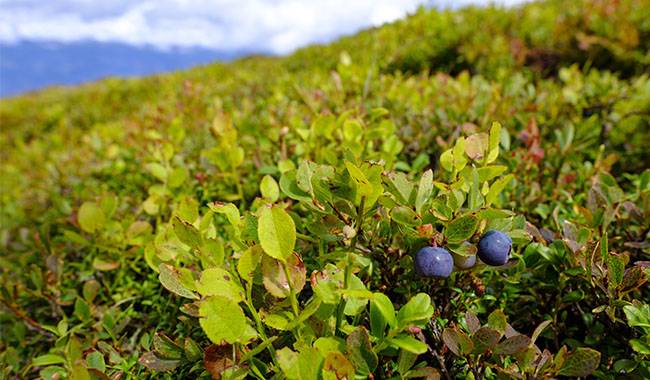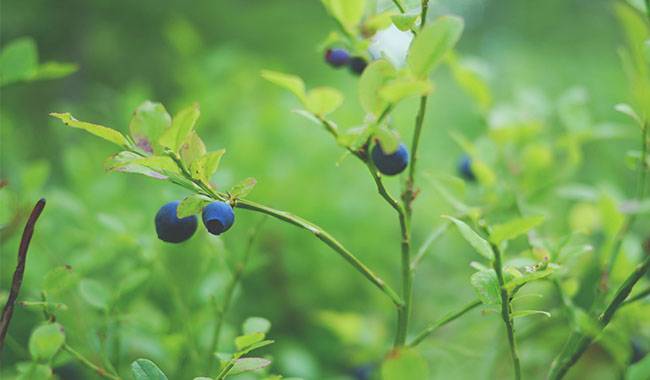
In the previous article, we discussed the types of blueberries and their characteristics and learned about the benefits of blueberries. In this article, we will discuss how to grow blueberries and from planting to harvesting.
Blueberries can only provide us with delicious and healthy berries if she is properly grown and properly cared for.
PLANTING BLUEBERRIES
Garden blueberries can be planted in permanent locations in the fall and spring, but spring planting is still desirable because it reduces the risk of freezing young seedlings over the winter.
Blueberries are a very sun-loving plant and do not like cold winds, so it is best to plant them in a sunny and wind-proof location.
If you plant them in the shade, the berries will become sour and the number of berries will not be satisfactory.
Blueberries have very high soil requirements and prefer to grow in an area with acidic soil (pH 3.5-4.5) that has not been previously occupied by other cultivated plants because the mycorrhizae on the root base did not tolerate well developed soil.
If you do not have such a place, try to create it based on the fact that blueberries prefer leguminous sandy or peat loamy, well-drained soil.
To do this, we will dig a hole measuring 60x60cm (23.6×23.6inch) and 50cm (19.6inch) deep. It is recommended to loosen the bottom and the surface of the walls of this hole so that they do not become dense over time and do not impede the flow of water and air.
Then, fill the pit with a mixture of low decomposition peat or peat, sawdust, fallen needles and sand and add 40-60g of sulfur (for acidification) to the pit, mixing and compacting everything.
In other words, we made an acidic substrate, in which blueberries like to grow.
To acidify the soil, you can use citric or oxalic acid solution (add 3 teaspoons of citric or oxalic acid solution to 10 liters of water), and malic or 9% acetic acid (add 100 ml of malic or acetic acid to 10 liters of water) .
So far, it is not necessary to add any fertilizers to the planting pits, especially organic fertilizers that alkalize the soil.
It is recommended to plant tall blueberry bushes in summer barns 0.75 m-1.2 m (2.46-3.93 ft) apart from each other.
It is best to buy blueberry seedlings with closed root systems (in pots or containers) and then it is very important to plant them correctly.
Under no circumstances should you simply transfer the seedlings from the container to the hole, because the tender blueberry roots cannot turn sideways in the dense soil mass and the root system does not develop properly, in which case the plant is likely to die within a few years.
To prevent this from happening, the container with the seedlings must be lowered into the water for only 10-15 minutes before planting, then remove the plant from the container and knead this clod very carefully, if the roots are tightly entwined with the ground then you must carefully spread them out by hand.
While the seeds are growing in the container we water them 5-6cm (1.96-2.36inch) deep and cover them with sawdust (or other mulch).
In summer the mulch will be able to resist weeds, retain moisture and be used only as an additional fertilizer; in winter it will protect the roots from frost damage.
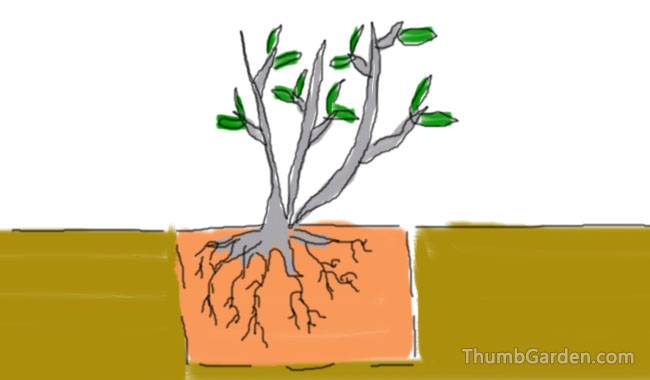
HOW TO CARE FOR BLUEBERRIES?
Regular weeding is vital to the care of blueberries. Especially when the bush is young, weeds are the biggest enemy of blueberries.
Loosening is equally important, but it should not be forgotten that the root system is located at a depth of 20-40cm (7.87-15.7inch), so we must loosen the trunk to a depth of no more than 8-10cm (3.14-3.93inch).
During the growing season of the plants, it is recommended to mulch a mixture of wood chips and decomposed fertilizer around the trunk 2-3 times.
WATERING IS IMPORTANT
When growing blueberries, it is necessary to constantly monitor the water conditions as the plant requires moisture. It is important to prevent the soil from drying out.
The soil must be kept moist at all times until the blueberry seedlings have rooted.
You will need to keep two to three watering times within a few weeks.
And, in the future, if the weather is dry, you will need to water the blueberries twice a week, preferably in the morning and in the evening.
In hot weather, spraying the bushes with cold water is recommended.
Heavy watering of blueberries is necessary from July to August when the bushes are bearing fruit and laying buds for future harvests.
However, at the same time, even though blueberries are a very moisture-absorbing plant, it is forbidden to use too much water, so water stagnation should be avoided.
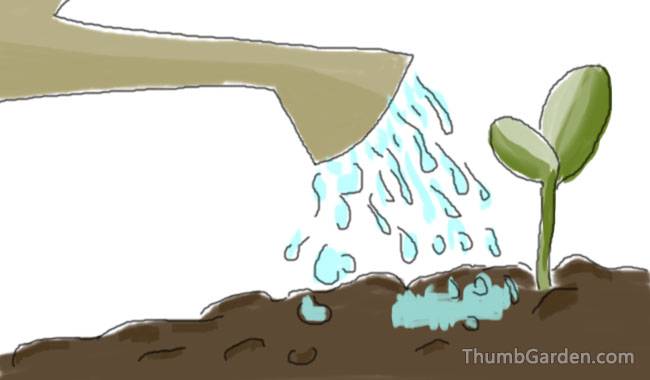
WHEN TO PRUNE BLUEBERRY BUSHES?
Pruning blueberries at a young age is not recommended. Only in early spring (before the buds swell) can diseased, broken, ground crawling, weak, and frozen branches are cut out of the non-fertile bushes.
But by the time the trees are 10-12 years old, the bushes begin to crush the berries and reduce the yield.
Therefore, it is necessary to perform anti-aging pruning, which can be done in two ways.
Removal of all old branches in one year. The disadvantage of this method is a significant loss of yield in 2-3 years.
In the first year of pruning, we remove only some of the old branches, leaving the rest for the fruit. In the second year, when the shoots grow, we remove the remaining shoots.
FERTILIZATION
To improve growth and increase yield, it is best to add mineral fertilizers to blueberries, while organic fertilizers are just contraindicated.
It is recommended to feed blueberries twice in spring.
We feed blueberries once when the buds are expanded and a second time 6-7 weeks later.
You should start feeding blueberries from the second year of planting.
- one tablespoon of complete mineral fertilizer applied to the bush for two
- The third years – 2 tablespoons.
- The fourth years – 4 tablespoons.
- The fifth years – 8 tablespoons.
- Over sixth years – 16 tablespoons.
By the presence of blueberries, it is easy to determine which minerals are currently lacking in blueberries.
Nitrogen – Bud growth slows down, older leaves turn yellow-green, and if N deficiency is significant, the entire bush looks yellow-green, then a light red color appears on the leaves, yield decreases, and berries become smaller;
Phosphorus – presses the leaves tightly to the stem and acquires a purple tint.
Potassium- the disappearance of leaf tips, the appearance of spots, darkening, and death of the tops of young shoots
Calcium-deformation of leaves with yellowing of edges
Magnesium-leaves with a red margin, but at the same time, the green color remains near the midrib.
boron-leaves at the tip of the root turn blue, yellowing between the veins of older leaves, cessation of bud growth, and then death.
glandular – on young apical leaves, yellowing between veins, the formation of a network of green veins against the yellow background of the whole leaf
Sulfur – the leaves change color to yellowish-white, sometimes even to white.
By observation these signs, it is possible to determine which elements the plant lacks and to compensate for this deficiency in time, and additionally supplement it with appropriate mineral fertilizers.
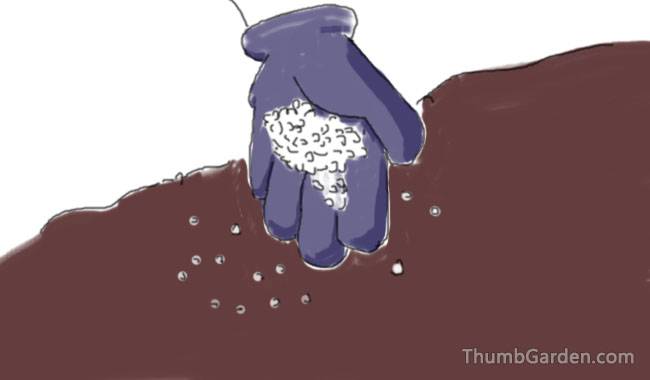
SHELTER IN WINTER
In most cases, high blueberries have a frost resistance limit of minus 23-25°C (73.4-77°F), but of course, the possibility of freezing is particularly high in snow-free winters.
If you plant late-maturing varieties, then please do not forget that they often suffer from early autumn frosts and therefore these must first be covered with non-woven or coarse linen.
Preparations for overwintering bushes should be started in advance.
The branches must be bent to the ground, for which you can use twine or arcs, placing them crosswise.
Then, when the frost is stable, we cover the bush with non-woven burlap.
But it is better not to use cling film.
From above, you can throw the branches of spruce. In winter, the bush can also be sprinkled with loose snow in order to keep the tops of the stems always covered with a white blanket.
With the onset of spring, we remove the shelter and cut off the tips of the frozen branches.
Blueberry flowers usually do not need spring protection as they can withstand frosts up to 7°C (44.6°F).
HARVESTING
The time to pick the berries depends on the variety we grow. Thus, if the blueberry variety.
Early ripening, then we start harvesting berries from the first decade of July.
If it is peak season – from the second or third decade of July
and late-ripening – from the second or third decade of August.
The blueberry fruit does not ripen at the same time, so the harvest on the bushes lasts for more than a month.
The first sign that blueberries are ripe is the change from green to blue-purple. This means that the berries will ripen within a week of good weather.
Only those berries are removed from the bush that can be easily separated from the brush by dry separation.
The largest, most attractive, and tastiest berries are the first and second season, so they are best eaten fresh.
Also, the next berry harvest is much smaller and I recommend using them for processing.
Now, we know almost everything about this wonderful berry. We just need to consider how the blueberry reproduces which pests and diseases plague her. How to deal with them? We will discuss that in the coming article.




